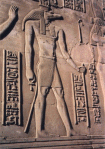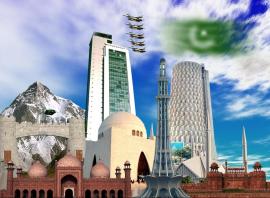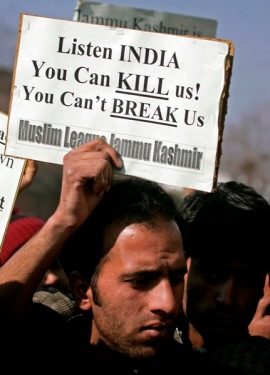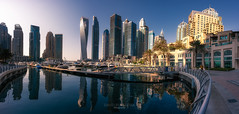Humanity has always adorned and embellished. From earliest times we have painted ourselves and distinguished one tribe from another by our clothes, jewellery and hair – it is an innate part of us. The artistry and celebration attached to adornment and embellishment are natural and confirm the creative capacity of humankind.
Yet as we move further into the 21st century it is clear that the entire planet is out of balance, and nowhere is this demonstrated more comprehensively than in the fashion industry. Whilst some issues are beginning to be addressed, social injustices such as sweatshops and child labour remain unresolved. But what we are only now beginning to register is the acute and profound social, spiritual and psychic damage we humans are suffering from after half a century of unrestrained greed, a daily diet of advertising, and rampant over-consumption.
Our lust for shopping and our sophistry for style have taken us into a critical new arena. Human identity is now defined by what one owns rather than who one is. Our looks have never been so important – celebrity-obsession and self-obsession reveal a new cultural neurosis. The vast majority of the world now spends its leisure time shopping for fashion and considers it an important part of life. But at what cost?
As a fashion editor of twenty years’ standing I have found it extremely uncomfortable to admit that the seemingly harmless fashion industry is actually driving our demise. It is at the heart of all that ails us; pull at any social or environmental thread, and it will lead you back to the fashion industry.
Fashion has always served as a cultural barometer, measuring the zeitgeist of any given period. The most obvious example would be the appearance of the mini skirt or the vivid psychedelic prints of the 1960s as clear symbols of liberation and fun. True to its role as society’s mirror, fashion reflects the cultural distortion of our times. Many of the recent catwalk shows echo distorted social trends, as designers showed either tiny, child-sized clothing, or ludicrously bloated, outsize silhouettes. It is important to note that most designers are looking back in time for inspiration, clearly demonstrating a zeitgeist that is terrified of its future. Much of Western society is in the grip of an unprecedented illusion and is deeply entangled within it. Modern icons are no longer poets, statesmen or rock stars – they are models.
THIS DISTORTION DOES not simply apply to clothing. It is reflected in our bodies as well. Eating disorders, self-harm and body dysmorphia are endemic modern symptoms. And as the effects of the credit crunch begin to take hold, psychologists have coined a term for heavily addicted shoppers who eschew food in order to afford the clothing they crave: ‘fashionrexic’.
We are obsessed with our appearance. Due to sophisticated technological advancement it is now very hard to tell whether teeth, breasts, lips and hair are our own; whether the suit I am wearing is Prada or Primark; and, in a good light, whether I am twenty-four or forty. What marks this phase in humanity now is our dedication to self.
We can, and do, with relative ease, improve our looks with Photoshop and airbrush ourselves into a new reality. No matter whether we actually like the style or not: we are very powerfully persuaded to conform and go with the trend in order to appear fashionable. The consumer is now tyrannised by trends. The market is saturated and people are beguiled, bedazzled and bewildered by ‘choice’. The irony of the situation is that in reality we have very little consumer choice at all. But for a tiny design flourish here or colour option there, most fashionable shops, cafés, coats, dresses, cars and magazines all look the same: the consumer equivalent of a monoculture.
I believe that we are in one of the most conventional historical periods of all time. A glance down any high street in any country in the world will show how conformist and similar we now look. The combination of globalisation, the rise of the internet and the domination of fast fashion means that, with a few rare exceptions, we really do all look the same.
FAST FASHION IS a relatively new phenomenon: it was not until the 1990s that we saw the rise of Primark, Zara and their ilk, with women’s magazines urging weekly wardrobe revisions, supported by just-in-time production and overnight global distribution. Fast fashion found its feet, and the industry congratulated itself on ‘democratising’ fashion, making it affordable for all.
Mass production and sweatshops have existed since long before the 1960s, but the new demands of ever-increasing output and more sophisticated design have pushed garment-makers into a new pressure zone. That the makers of these clothes are highly skilled, producing complex cutting and highly accomplished hand finishing – the quality of which has never been seen on the high street before – often goes unnoticed. What had previously taken at least a day to make is now expected to be made, perfectly, in an hour.
As sales rose, fast-fashion brands and factory owners colluded to push garment workers harder and harder. More and more workers were hired, whilst working conditions and wages deteriorated, simple human rights such as rest times, toilet breaks and food were, and continue to be, restricted, and child labour became an effective tool in quenching consumers’ desire for more and more stuff. As the money rolled in, nobody liked to question the ethics of such practice.
Marks & Spencer, Gap and Primark have all been exposed for bad practice and appalling treatment of out-workers. They all now claim to have rectified this, but the process remains less than transparent and there is currently no way the consumer can guarantee that clothing has been made without misery. British billionaire Philip Green, who owns some of the United Kingdom’s largest retail chains, is a controversial figure at the centre of this debate. As one of the most powerful players in fast fashion, Green could at a single stroke reverse fashion malpractice and pioneer real change for the better. He continues to resist and has made almost no effort to make or demonstrate progress on fair pay and fair conditions for workers, either overseas or in the UK. Garment workers for his Arcadia group continue to exist on a derisory wage and are not given basic worker rights. Anti-sweat-shop groups such as Labour Behind the Label, No Sweat and the student activist network People & Planet have condemned Arcadia group and Green for these practices.
It is interesting to note the relatively recent high-profile exit of the managing director of Topshop, Jane Shepherdson – regarded as the creative force behind Topshop’s phenomenal financial upturn – who now works for Whistles and Oxfam. Shepherdson produced a brand for Oxfam aimed at ethically conscious shoppers. She receives no pay for this and has hit out at “cheap clothes that exploit workers in developing countries”. In response, Topshop has just launched an ‘Eco’ range of clothing, but it seems little more than an experiment in green-wash.
Modern fashion is made from many seemingly incompatible ingredients, but the cornerstones are built-in obsolescence, fear of humiliation, and sexual attraction. Warmth, comfort and personal style have for the most part taken a back seat. As the ‘trend frenzy’ deepens, we can see that fashion is no longer about style and self-expression: it is primarily about judgement – self-judgement and judgement of others. A toxic media reporting how women ought to look, and celebrity obsession further enforce this strange new
paradigm.
OUR SELF-IMAGE is distorted and it is now an indisputable fact that our collective psyche is in deep pain. Thirty years ago divorce, pornography, underage sex, drug addiction and teenage suicide were rare. Today they are pretty much the norm. The recent Good Childhood report commissioned by The Children’s Society confirms the malaise and observes that today’s children are more “anxious and troubled” and their lives are “more difficult” than in the past. The report concludes that this is due to the quest for material success by adults, who, it suggests, must confront their individualistic culture by focusing on helping others rather than pursuing their own selfish ends. We are not bad parents: we are merely mistakenly gripped by the illusion of glamour. By buying into the illusion, it could be said that we are committing slow suicide. We may look good, but we feel bad.
At the core of much of Western culture’s present malaise is the endless ‘fast-feast’ of consumerism. Twenty-four-hour internet shopping and sophisticated marketing have boosted fashion retail into an international leisure sport. We are none of us immune to the manipulative methods of the advertising industry, and it ignites artificial needs in all of us. This is particularly evident within fashion advertising, which manages to simultaneously intimidate and enthral.
British psychologist Oliver James asserts in his book Affluenza that there is a correlation between the increasing nature of affluence and the resulting increase in material inequality; the more unequal the society, the more unhappy its citizens. We have seen this played out acutely in recent years with the rise of “luxury fever” – where brands like Louis Vuitton, Prada and Versace produce ever more astonishingly expensive products. Last year footballer David Beckham gave his wife an £80,000 diamond-encrusted Hermès handbag for Christmas, sparking a rash of high-street look-alike bags at a fraction of the price.
As technology ‘improves’, manufacturers can replicate a designer item in no time. Fast fashion now has a six-week rather than a seasonal cycle, in order to lure customers back into stores more frequently. It is testament to the garment workers’ skill and expertise that we often find it hard to distinguish the real from the counterfeit – these days often the only difference is a small design flourish, the label and the price tag.
THE TRUE ECOLOGICAL and economic impact of fashion is inescapable. Much of the pesticide-ridden cotton now produced by the United States is exported to China and other countries with low labour costs, where it is milled and woven into fabrics, cut and assembled according to fashion industry specifications, then flown around the world. China has emerged as the largest single exporter of fast fashion, accounting for 30% of all world apparel exports, according to the UN Commodity Trade Statistics Database.
In her book The Travels of a T-shirt in the Global Economy, Pietra Rivoli, a professor of Business at Georgetown University, writes that each year Americans purchase approximately a billion garments made in China. Fashion-related pollution in Africa, India and Brazil is now well-documented and continues to cause concern, and new alarms have been raised after reports revealed the Mexican city Tehuacán is facing serious water and land pollution due to the heavy use of the bleaching agent potassium permanganate to ‘distress’ denim.
What is clear is that our obsession with fashion is now quite literally costing us the Earth. The water-hungry processes in the manufacture and dyeing of clothing have a devastating impact. At the 2008 ‘Be The Change’ conference in London, writer and environmental campaigner Maude Barlow confirmed that China has now reached its “water wall” and is facing critical water shortages, having destroyed 80% of its rivers with toxic chemicals and dyes and squandered its own water resources to make cheap clothing for export to the West.
Fast fashion leaves a significant environmental and social footprint: each step of the clothing life cycle creates environmental and occupational hazards. Because of the insidious pressure of trends and built-in obsolescence, the average garment only has a three-month shelf life. UK clothing and textile consumption is high; Dorothy Maxwell’s recent Sustainable Clothing Road Map for Defra (the Department for Environment, Food and Rural Affairs) confirmed that over 2 million tonnes of clothing are purchased in the UK every year. Most shocking of all is that we throw away over a million tonnes of textiles every year, most of it ending up in landfill. Landfilled textiles, garment dyes and bleaches cause toxic chemical seepage into ground and watercourses, and the build-up of methane gas as materials decompose causes further health hazards.
The fashion industry’s pollution problems are multi-layered, and the cost is human and environmental; from unsustainable farming practices, uncontrolled pesticide use and toxic dyes to the squandering and contamination of global water reserves and the concerns over textile landfill, the debate gets ever more complex. It has been estimated that it takes 800 litres of water to grow the cotton for just one pair of jeans.
The trend for organic cotton over the past few years, though well-meaning, is not the whole solution, as cotton is a very thirsty crop. While some ethical designers provide good-quality, fairly traded organic cotton garments, this move has been used unscrupulously as a token gesture by the fashion industry to appease concerned consumers whilst other, unsustainable manufacturing processes continue unabated.
To buy organic is not enough, and the ‘luxury’ price affixed to many organic labels makes this choice prohibitive to most. Thankfully many enlightened designers are seeing new opportunities in design and manufacture, working with less thirsty, more sustainable crops such as hemp and bamboo, so we are beginning to see a new wave of fashion design that is beautiful, practical and sustainable.
THE YEAR 2009 must herald a sea change. This is the year we must start cleaning up our mess. The heady
combination of a visionary leader in the shape of President Obama and the world-shaking global impact of the credit crunch has brought all these problems into sharp focus. Fashion’s mirror is now reflecting back with the demise of the ‘bling’ culture – an outward demonstration of a shift in consciousness.
We have lost our appetite for fakery and now collectively crave authenticity. Rising interest and sales in sustainable fashion, charity shopping and vintage clothing express this new mood. As the credit crunch bites we are forced to face our collective insecurities and ‘make do and mend’. Lack of money is already creating a host of creative responses as humans begin to re-
appraise and reassess. We are finally seeing a correction, albeit not voluntary, in many unsustainable practices.
People power is emerging as a new social trend: witness the rise in popularity of internet sites like WiserEarth, Kiva and TED, confirming a global desire to positively connect. The basic human quality of free will can be re-
activated and revitalised as people learn to shop judiciously and consciously. As we activate intelligent, thoughtful choices, we can positively affect our future. Once we dismiss the illusion of glamour and wake up to the power and delight in having less stuff and more time, we can embrace being more human.
All our systems have simultaneously broken; global capitalism has failed every sector. There is only one area that is thriving, and that is the spiritual. Rather than the gloomy and apocalyptic attitude taken by most of the world’s press, many wise thinkers welcome this global meltdown as a great opportunity to reappraise pretty much all aspects of living and being – including trade, design, and lifestyle. We all have to learn to be human again. It is as if humanity had just emerged from a fifty-year binge: shamefaced and hungover, we now have to look in the eye the true spiritual cost of what we have done.
The credit crunch has come just in the nick of time. This critical global condition calls for all our ingenuity and good sense. Although the core of the fashion industry is still very sick, there are many working within its realms who are enlightened and are taking right action to rebalance the system. It is up to those of us who buy clothes to demand that all our clothing be sustainable by its very nature, and to bring fair trade to the forefront of all manufacture.
At last the possibility of fairness for all, good design and the old-fashioned notion of ‘built to last’ are re-emerging as solutions. Many organisations are addressing the problems directly by working alongside women’s co-operatives in India and Africa that support local families and ancient crafts while producing reasonably priced, well-made products.
Slow fashion is now emerging as a new paradigm as fashion labels such as Some Like it Holy, Ciel, Ray Harris and Katherine Hamnett address these complex issues by producing beautiful hand-crafted clothing with a cradle to cradle life span. Internet retailer Adili is at the forefront of slow fashion, selling products that are ‘trans-seasonal’, intended to be worn long-term, and made with materials that are organic, recycled and fairly traded. When it comes to fashion, less really is more.
Our challenge is to find a way to resynthesise the extreme polarities of our time: on the one hand we have globalisation and all its negative financial and ethical ramifications, and on the other we have the new consciousness: a One World view. Globalisation has misunderstood and misused this concept for its own ends. We have misinterpreted our connectivity and as a result are more disconnected than ever. Now we have to learn to express ourselves and reconnect with integrity.
In the end the true antidote is to adopt an attitude of voluntary simplicity. A manner of living and being that is outwardly more simple and inwardly more rich. A way of being in which our most authentic and alive self is brought into direct conscious contact with every part of our lives.
(Charty Durrant is a former Fashion Editor of The Sunday Times, The Observer and British Vogue and is a Lecturer in Contemporary Communication at The London College of Fashion.)
 Ra, the Sun God symbolized the creation of every living soul. It was widely believed that Ra was the first being and all the other beings were born later or were his progeny. He is depicted as a man’s body with the head of a hawk with an ankh and a scepter in his hands. He was largely worshiped in Heliopolis (Greek for city of the sun) which was the cult place in ancient Egypt.
Ra, the Sun God symbolized the creation of every living soul. It was widely believed that Ra was the first being and all the other beings were born later or were his progeny. He is depicted as a man’s body with the head of a hawk with an ankh and a scepter in his hands. He was largely worshiped in Heliopolis (Greek for city of the sun) which was the cult place in ancient Egypt.
 I believe in angels. The word angel means messenger. Everything that exists is a manifestation of one being, and it manifests through messengers. Messengers deliver the will of the one being, and the supreme messenger is light.
I believe in angels. The word angel means messenger. Everything that exists is a manifestation of one being, and it manifests through messengers. Messengers deliver the will of the one being, and the supreme messenger is light.


































Recent Comments